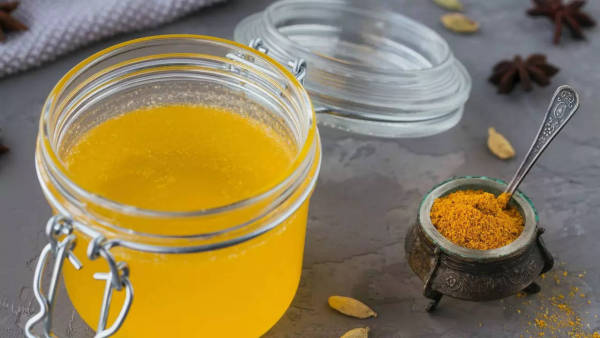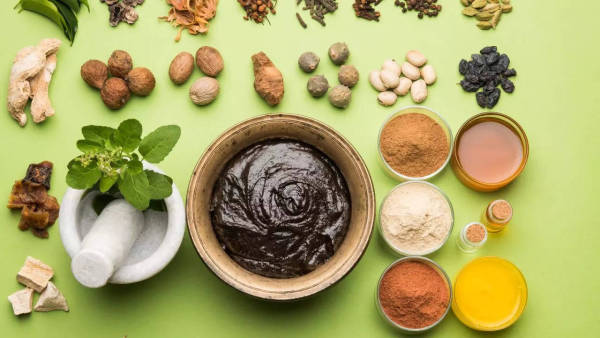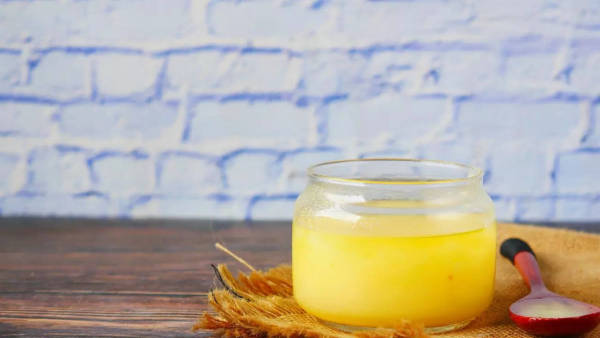
Winter brings with it a plethora of health issues and season-induced infections, which can take a toll on our health. While most people stick to medications to treat such seasonal ailments, there are certain age-old remedies that can work wonders in fixing most winter woes. Interestingly, in most households, ghee is that one ingredient that can heal everything from sore throat to poor digestion when the right ingredients are added to it. Here are some common spices and herbs that can be added to ghee to make it a potent remedy for most winter woes.
Why combine ghee and other spices?
Combining ghee with spices and herbs can improve its efficacy and help in treating several health conditions that are triggered with the onset of winters. Here’s a lowdown on the spices and herbs that work wonders when added to ghee and used as a remedy.
Turmeric
Turmeric is one of the most potent anti-inflammatory and antioxidant herbs, making it an essential addition to your winter diet. The compound curcumin in turmeric helps reduce inflammation and fights off infections, making it highly effective for treating joint pain, sore throats, and even flu-like symptoms during the winter months. When mixed with ghee, turmeric’s bioavailability is increased, allowing the body to absorb and benefit from its healing properties more effectively. You can make turmeric ghee by gently heating the ghee and adding turmeric powder, allowing it to infuse. This golden ghee can be used in cooking or consumed directly to boost immunity and reduce inflammation.

Cinnamon
Cinnamon is an excellent spice to add to ghee in the winter as it has a warming effect on the body. It stimulates blood circulation, helping to keep you warm during chilly weather. Additionally, cinnamon is known for its ability to balance blood sugar levels, regulate digestion, and promote heart health. To make cinnamon-infused ghee, simply heat ghee and add a cinnamon stick, allowing it to steep for a few minutes. You can use this fragrant ghee in your meals or as a topping for warm dishes like porridge or toast. Its warming properties make it ideal for cold winter nights.
Ginger
Ginger is a powerful root that offers multiple health benefits, particularly for digestion and respiratory health. In winter, cold weather can often lead to digestive issues, sluggish metabolism, or even nausea. Ginger, when combined with ghee, helps stimulate the digestive enzymes, alleviating bloating, indigestion, and nausea. Furthermore, ginger’s anti-inflammatory properties make it beneficial for treating sore throats and coughs. Adding finely chopped or grated ginger to warm ghee will allow you to create a soothing and healing remedy. Ginger-infused ghee can also be consumed in warm drinks or added to your meals.

Cloves
Cloves are not only flavorful but also possess powerful antibacterial and antiviral properties, making them perfect for combating winter illnesses. During the colder months, the immune system can be weakened, making us more susceptible to colds and flu. Cloves help to fight off infections, reduce pain, and relieve congestion. You can infuse ghee with crushed cloves and use it in your cooking or apply it topically for a warming massage. The combination of clove-infused ghee and its ability to stimulate circulation makes it an excellent remedy for winter health issues.
Cardamom
Cardamom is another common spice to include in your winter ghee preparation. It is known for its ability to clear the respiratory tract, making it useful for treating winter-related breathing difficulties like asthma or bronchitis. The spice also helps boost energy levels, which can be particularly helpful in combating the sluggishness and fatigue that often accompany the colder months. To make cardamom ghee, simply crush a few cardamom pods and add them to warm ghee. The aromatic and flavorful cardamom ghee can be consumed with warm milk or added to your favorite winter recipes.

Holy Basil
Tulsi helps reduce stress hormones, balances the body’s response to stress, and has antibacterial properties that can fight infections. Tulsi-infused ghee is easy to prepare—simply heat ghee and add fresh or dried Tulsi leaves. This herb-ghee blend can be consumed directly or used as a cooking fat to enhance your meals, offering both immunity support and stress relief.
Saffron
Saffron, known for its luxurious and fragrant qualities, offers significant benefits for the skin and mood. During winter, skin often becomes dry and dull due to cold air, but saffron helps promote a healthy glow by nourishing the skin from within. Additionally, saffron has mood-enhancing properties, helping combat the winter blues. Adding a few strands of saffron to warm ghee allows the active compounds in saffron to infuse into the ghee, making it perfect for both cooking and topical application. Saffron ghee can be used in desserts, drinks, or simply consumed with warm milk for a nourishing effect on the skin.
Fenugreek
Fenugreek, or methi, is another herb that can be very helpful during winter, especially for individuals dealing with joint pain and poor circulation. Its natural anti-inflammatory properties help ease arthritic pain and inflammation. Fenugreek also promotes healthy blood circulation, which is vital during the colder months when our blood vessels tend to constrict. To make fenugreek-infused ghee, toast fenugreek seeds lightly and mix them with warm ghee. This combination can be applied to painful joints or consumed to promote joint health and circulation.
 Winter brings with it a plethora of health issues and season-induced infections, which can take a toll on our health. While most people stick to medications to treat such seasonal ailments, there are certain age-old remedies that can work wonders in fixing most winter woes. Interestingly, in most households, ghee is that one ingredient that can heal everything from sore throat to poor digestion when the right ingredients are added to it. Here are some common spices and herbs that can be added to ghee to make it a potent remedy for most winter woes.
Winter brings with it a plethora of health issues and season-induced infections, which can take a toll on our health. While most people stick to medications to treat such seasonal ailments, there are certain age-old remedies that can work wonders in fixing most winter woes. Interestingly, in most households, ghee is that one ingredient that can heal everything from sore throat to poor digestion when the right ingredients are added to it. Here are some common spices and herbs that can be added to ghee to make it a potent remedy for most winter woes.


